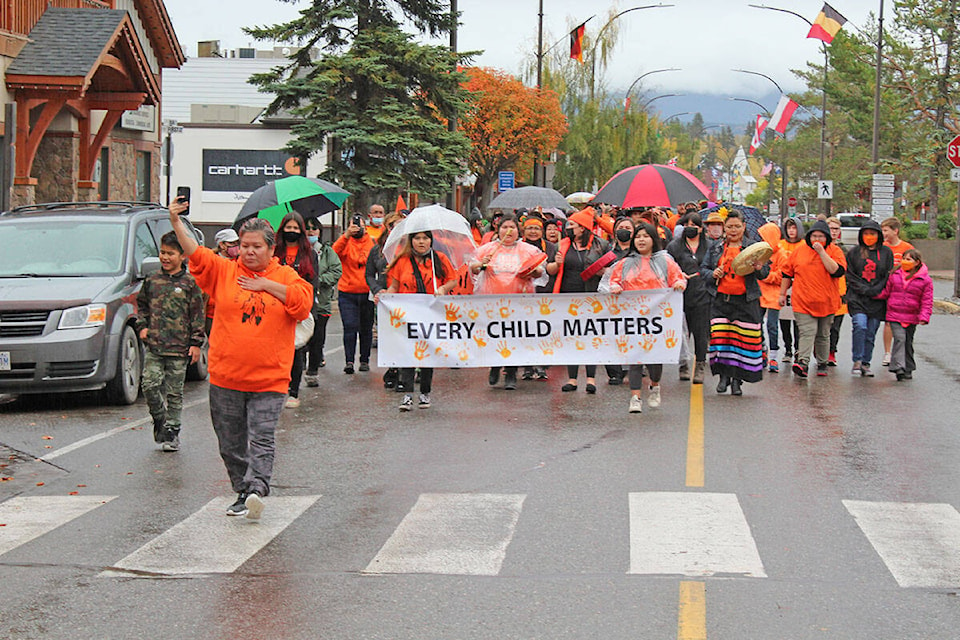Editor’s note: The story below may trigger difficult or traumatic thoughts and memories. The Indian Residential School Survivors Society’s 24-hour crisis line is available at 1-866-925-4419.
Hundreds of people turned out in Smithers Sept. 30 to mark the inaugural National Day for Truth and Reconciliation.
The huge crowd, which covered the length of almost two downtown blocks, was led by a pair of girls carrying an “Every Child Matters” banner and a group of women drumming and singing.
They marched from the Bulkley Valley Museum to Bovill Square where residential school survivors and their families spoke of the intergenerational trauma imposed by the residential school system.
Kayla Mitchell, the event’s emcee and co-organizer, said she was impressed by the show of solidarity and that those who gathered were creating historic change.
Annette Morgan, executive director of the Dze L K’ant Friendship Centre Society, said she was also very pleased with the turnout.
“It’s so important that community takes a lead role in the healing process,” she said.
In June, the federal government designated Sept. 30, traditionally Orange Shirt Day, as the National Day for Truth and Reconciliation.
This year, Dze L K’ant decided to make it a week of events dubbed Orange Shirt Week.
Other events for the week included staff at Coast Mountain College wearing orange shirts for opening day; making orange quilt squares with residential school survivor Sonia Palmer; and war canoe pulling at Tyhee Lake.
The friendship centre was closed Sept. 30 in observation of the day.
The residential school system was established in 1880. The last school did not close until 1996. It is estimated more than 150,000 First Nation, Inuit, and Métis children between the ages of 4 and 16 were taken from their families and placed in the schools over the course of that 116-year period.
In May, the country was rocked by the discovery of 215 unmarked graves at the former residential school in Kamloops. In total, nine sites have been investigated across the country with ground-penetrating radar and more than 1,300 potential unmarked burials have been found.
Nobody knows for sure how many may yet be uncovered, but investigations have been launched at 17 other residential school sites and more than 20 others are being discussed.
The National Truth and Reconciliation Centre, which holds all the records from the Truth and Reconciliation Commission (TRC), has currently documented more than 4,000 deaths, but the real number could be much higher.
Murray Sinclair, former chair of the TRC figures the number could be as high as 15,000 to 25,000 due to poor record-keeping.
editor@interior-news.com
Like us on Facebook and follow us on Twitter
